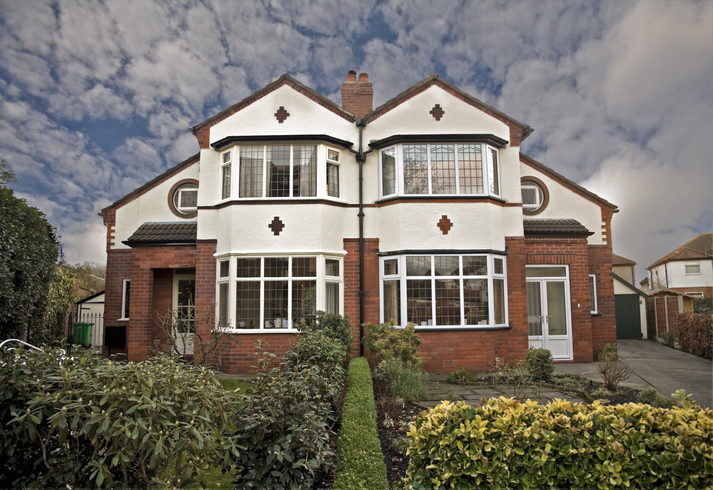They may have seen a boom in prices during the pandemic, but detached homes could be costing their owners thousands of pounds in extra fuel costs, according to analysis by Halifax.
While lockdown has prompted a ‘race for space’ amongst home movers, the wider cost implications of owning a detached or period home may not have been so obvious.
Yet these homeowners face some of the biggest energy cost increases following the fuel cap rise and the most work to make homes more energy-efficient.
Modern construction standards have pushed the energy efficiency of homes upward rapidly: the average EPC rating for home built since 2012 is B or higher, compared to the average rating for all homes in England and Wales of D. For the 4.2 million homes built before 1900, the average EPC rating is only E.
And just one in ten homes built before the 1930s achieves an EPC rating of C.
With around 25 million homes in England and Wales, around 60%, or 15 million, need energy efficiency improvements to meet a minimum EPC rating of C.
One of the key differences between older and newer homes that affects energy efficiency is how they are designed to deal with damp. In older homes, ventilation between floors and ceilings and under roofs is how moisture is dealt with, which in turn means poor heat retention.
Other differences include little or no insulation in floors, walls, and ceilings, single glazed windows, open fire places and lower standards of construction in key areas like doors and windows causing draughts.
Overall, it is estimated that around a quarter of heat loss from poorly insulated homes is through roofs, a third through external walls, another quarter through doors and windows, and the rest through floors.
Heat lost from homes varies depending on not just the construction but type of property. Flats are the only type of home that, on average, achieve an EPC rating of at least C.
This variation between types of home is thrown in to stark contrast when the proportion of new and existing homes that achieve a ‘C rating’ are compared.
Andrew Asaam, mortgages director, Halifax, said: “The 50% increase in the fuel cost cap is going to have an impact on everyone’s energy bills, in all but the most modern homes that impact is going to be significantly more.
“The majority of our homes fall short of the average C rating the Government aspires to, which means we’re wasting money and harming the environment heating our homes. Further fuel price increases are only going to mean we’re spending more to live in colder homes unless we act.
“We recognise that the cost of making these improvements is not inconsiderable for most and the rising cost of living means making these investments now will be difficult for many. We hope that our Green Living Reward cashback offer will help encourage and support some of those homeowners who want to make their homes more energy efficient.
“For the owners of the 15million homes currently below C, there are significant benefits in making energy efficiency improvements through lower fuel bills, warmer homes and increasing the value of their home. Investing in these upgrades now could more than pay for themselves; both environmentally and financially, in the future.”
It’s estimated that moving up one EPC rating band could save around £250 per year on average, which means the payback for any improvements would appear to be over several years, but the financial benefits are much greater.



